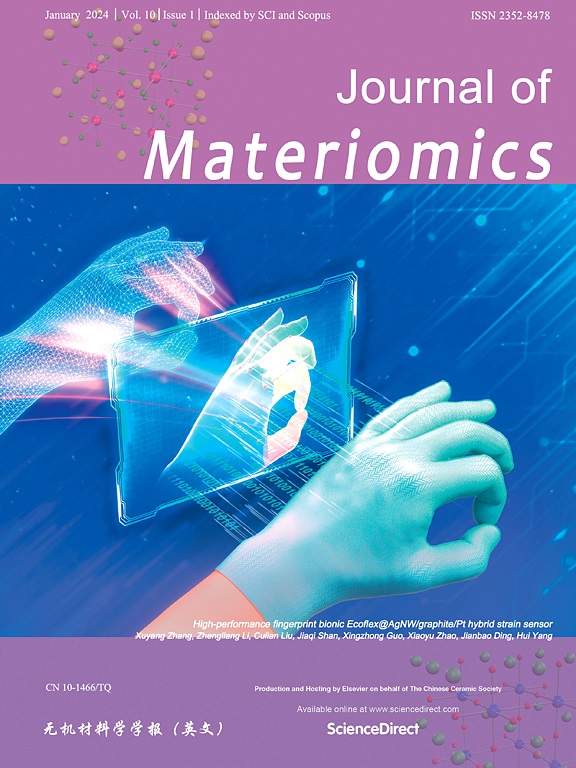机器学习辅助abo4型微波介质陶瓷Q×f值预测
IF 8.4
1区 材料科学
Q1 CHEMISTRY, PHYSICAL
引用次数: 0
摘要
微波介质陶瓷(MWDCs)具有较高的Q×f值,可以改善谐振器、滤波器、天线等射频元件的性能。然而,Q×f值的定量构效关系(QSPR)复杂且不明确。本研究利用机器学习方法对164个abo4型mwdc数据集的QSPR进行探索,建立Q×f值预测模型。我们采用5种常用算法进行建模,并使用35个与Q×f值相关的结构特征作为输入。为了从全局和局部的角度描述结构,比较了三种不同的特征构建方法。基于径向基函数核支持向量回归的最优模型具有良好的性能和泛化能力。最优模型包含原始细胞体积、分子介电极化率和电负性等特征。讨论了性能与结构之间的关系。用于四边形白钨矿Q×f值预测的模型表现出良好的性能(R2 = 0.8115, RMSE = 8362.73 GHz),但需要单斜黑钨矿陶瓷的平均键长、理论密度和单位体积极化率等辅助特征来提高模型预测能力。本文章由计算机程序翻译,如有差异,请以英文原文为准。

Machine learning assisted Q×f value prediction of ABO4-type microwave dielectric ceramics
Microwave dielectric ceramics (MWDCs) with a high Q×f value can improve the performance of radio frequency components like resonators, filters, antennas and so on. However, the quantitative structure-property relationship (QSPR) for the Q×f value is complicated and unclear. In this study, machine learning methods were used to explore the QSPR and build up Q×f value prediction model based on a dataset of 164 ABO4-type MWDCs. We employed five commonly-used algorithms for modeling, and 35 structural features having correlations with Q×f value were used as input. In order to describe structure from both global and local perspectives, three different feature construction methods were compared. The optimal model based on support vector regression with radial basis function kernel shows good performances and generalization capability. The features contained in the optimal model are primitive cell volume, molecular dielectric polarizability and electronegativity with A- and B-site mean method. The relationships between property and structure were discussed. The model used for the Q×f value prediction of tetragonal scheelite shows excellent performances (R2 = 0.8115 and RMSE = 8362.73 GHz), but it needs auxiliary features of average bond length, theoretical density and polarizability per unit volume for monoclinic wolframite ceramics to improve model prediction ability.
求助全文
通过发布文献求助,成功后即可免费获取论文全文。
去求助
来源期刊

Journal of Materiomics
Materials Science-Metals and Alloys
CiteScore
14.30
自引率
6.40%
发文量
331
审稿时长
37 days
期刊介绍:
The Journal of Materiomics is a peer-reviewed open-access journal that aims to serve as a forum for the continuous dissemination of research within the field of materials science. It particularly emphasizes systematic studies on the relationships between composition, processing, structure, property, and performance of advanced materials. The journal is supported by the Chinese Ceramic Society and is indexed in SCIE and Scopus. It is commonly referred to as J Materiomics.
 求助内容:
求助内容: 应助结果提醒方式:
应助结果提醒方式:


